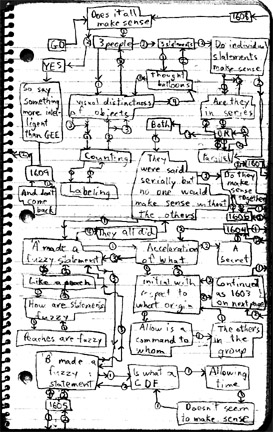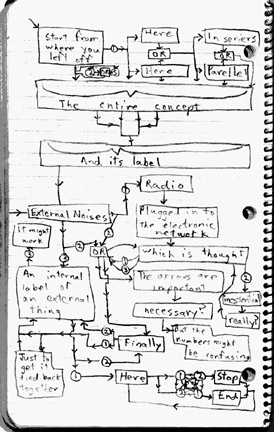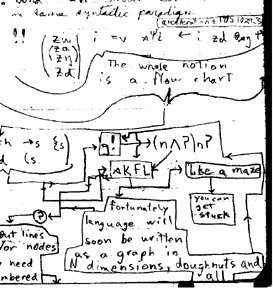HTML at its core is (with the
exception of the <table> element and possibly other
elements related to spatial arrangement) 1.5 dimensional: that is, its
fundamental
metaphor consists of written speech (text), with occasional embedded
belches of
multimedia (<object>, <img>,
<audio>, <video>) plus graph theoretic
cross-references that provide a modest foray into translinearity.
For alphabet A={a1, a2, ... , an }
and graphics G={G1, G2, ...Gk} (where A intersect G
is empty) we may represent a typical text as
For vocabulary V={w1, w2, ... ,
wn }, including graphics G and anaphora H={h1, h2,
...hk} (where G and H are subsets of V). An example of anaphora might
include H={this,
that, which, he, her}

Figure 2. The hypertext -- words
and pix in sequence with references.


![Semantic inferential structure associated with sentence [1]](HypotheticalUs.png)


